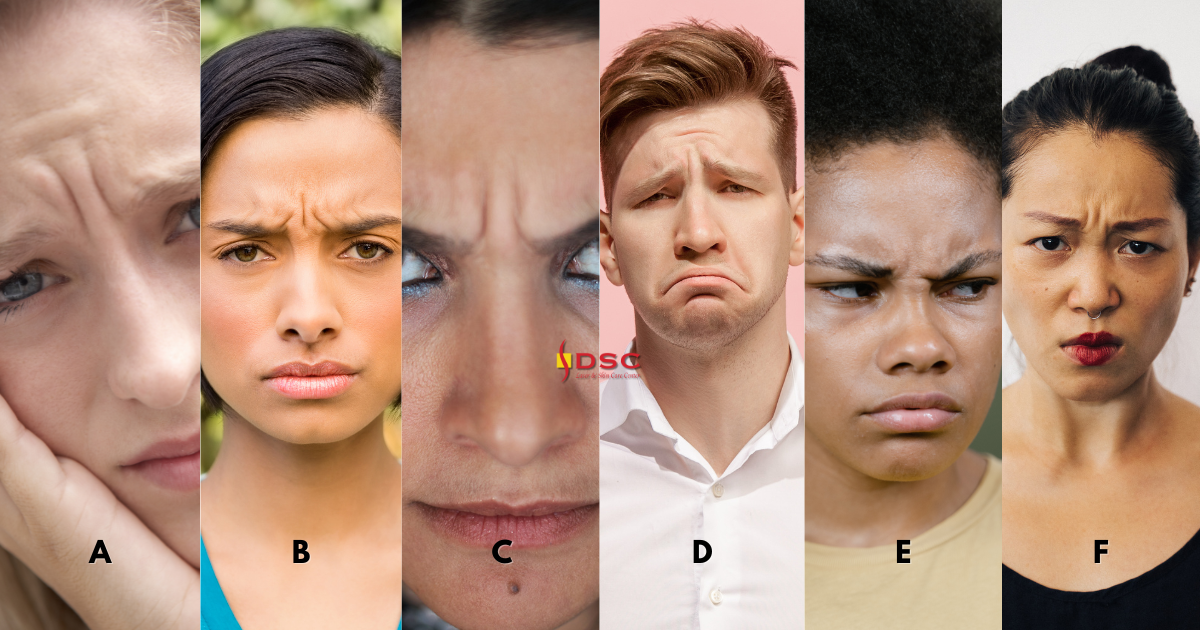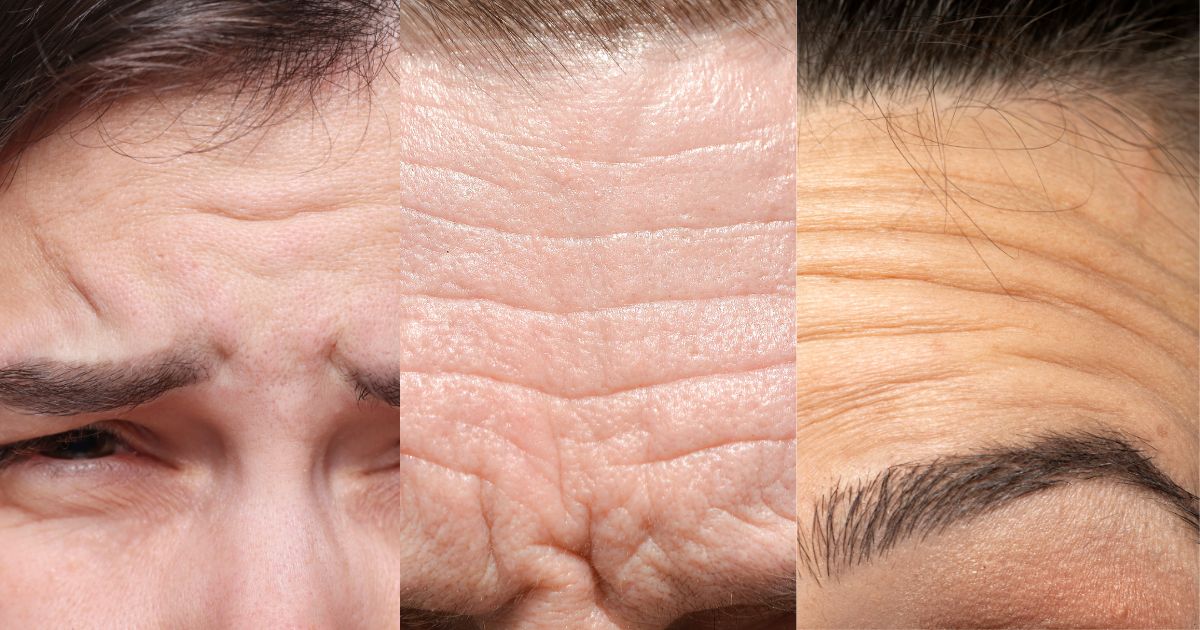If you have ever gotten a Botox treatment, you might think the process is very straightforward. The treatments themselves seem simple enough — a few quick pokes and treatment is over within minutes. This is because an experienced injector MAKES treatments seem easy, but they are actually quite technical. Choosing an experienced injector is the most important part of successful tox treatments. So, what do you need to know to be informed about ‘tox treatments?
Unique anatomy means that every individual’s treatment is different.
We know that ‘tox can treat many areas, like the forehead, frown lines (between the eyebrows), and crow’s feet. But, everyone’s wrinkle and movement presentation is different, so treatment is NOT rote. Below are a few examples of different types of frown lines.

It’s clear that frown lines is a generalization; muscle engagement and presentation of frown lines differs from person to person. Example A on the far left activates the forehead as well when frowning. This which is what causes the horizontal lines in the center of the forehead to show in addition to the “11’s” between the brows. In comparison, Example B has quite a lot of lateral muscle engagement when frowning, but no forehead engagement. Example E and F show asymmetrical engagement of the muscles responsible for frown lines. Example E has a bit of scrunching of the nose in addition to the 11’s between the brows, showing simultaneous activation of the procerus muscle between the brows.
This graphic makes it clear that ‘tox treatment isn’t quite as simple as following a template. Example A and Example D may feel treatment is inadequate if their foreheads are not also simultaneously treated. Example A and B have different amounts of lateral engagement of the muscles responsible for frown lines, thus requiring different injection patterns. Injecting symmetrical amounts may not be for those who engage muscles asymmetrically, as seen in Example F.
Another area that shows a high variety of presentation and can be challenging to treat is the forehead.

The frontalis is the muscle of the forehead responsible for lifting the brows. Weakening the lifting action smooths out the horizontal lines that form over time due to repeated muscle contraction. Overtreatment or treating too close to the brows can lead to drooping of the brows. This is because the forehead muscle is weakened against the counteracting muscles of the eyelids that pull the brows down. Different injection points can also lead to changes in the position and angle of the brows (due to changes in muscle activation). Length of the forehead can affect the dosage needed for successful treatment. Some people may unconsciously compensate for ptosis (drooping of the eyelids) or hooding due to aging by slightly lifting the brows. For these individuals, forehead Botox prevents that compensating lift and may lead to the sensation of heavy eyelids post-treatment.
Example A in the above graphic has very different engagement than C. The lateral edge of A’s frontalis muscle (the diagonal line) can be seen, while the horizontal lines extend quite far to the sides in Example C. The number of horizontal lines also differs from person to person. Example B may need adjunctive cosmetic treatments, since the lines have developed into static lines (lines visible even at rest).
All this is to say that your injector is probably the most important factor to consider when deciding on ‘tox treatments. A trustworthy injector is one who can help you achieve beautiful results that work with your unique anatomy time after time.
DSC Laser & Skin Care Center
www.dscbeauty.com
(626) 285-0800
info@dscbeauty.com
889 S. San Gabriel Blvd, San Gabriel, CA 91776
